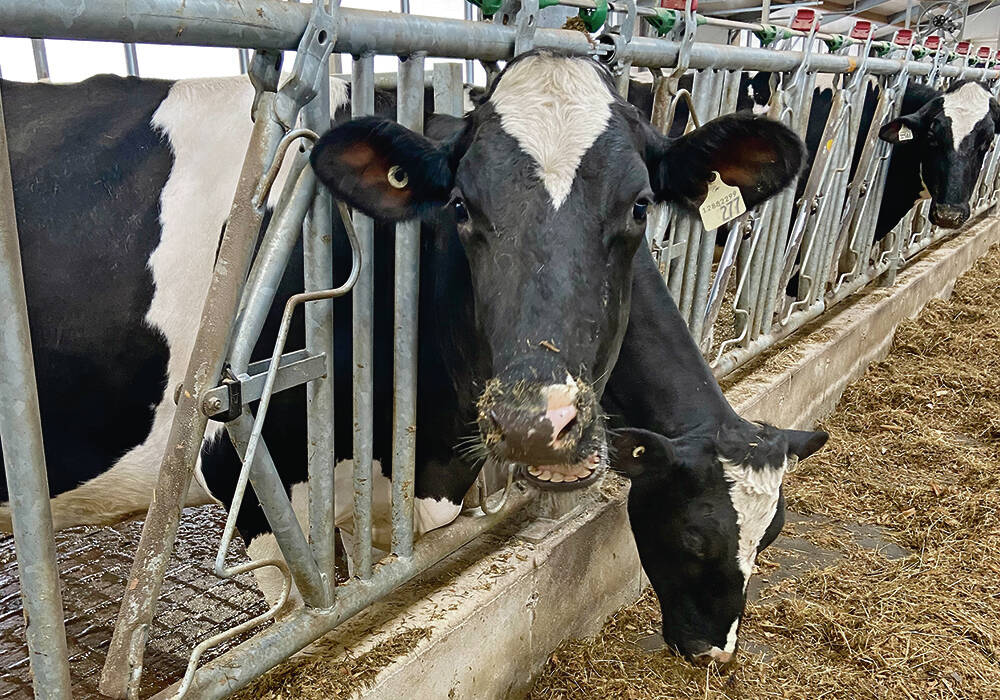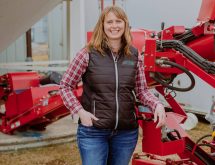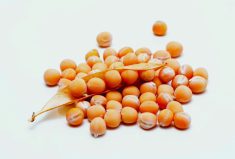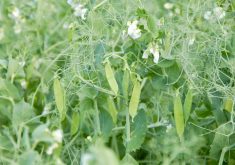When Alberta Pulse Growers recently announced its new board, it sent a press release to say it would work hard “to achieve the vision of pulses on every farm.”
But while many producers grow pulses (at least some of the time), the nitrogen-fixing legumes run far behind canola, wheat and barley in the crop popularity sweepstakes — something new Alberta Pulse chair Shane Strydhorst readily acknowledges.
“Despite the high cost of nitrogen fertilizer, many of the other crops are still profitable for people,” said the Neerlandia-area producer. “I think a lot of people get in a habit — they see efficiencies in growing cereals and canola, and they think it’s risky to try something new.”
Read Also

Alberta Milk opens annual hospital fundraiser
Alberta Milk embarks on holiday season campaign to raise money for Alberta Children’s Hospital Foundation
Canola and wheat take turns topping the acreage charts in Alberta, with each grabbing roughly a 30 per cent share of crop acres. Canola won bragging rights last year with 6.5 million acres to wheat’s 6.4 million. Barley was a distant third at 3.5 million acres (a 16 per cent share) but that was far ahead of peas (1.3 million, 6.1 per cent) and lentils (550,000 acres, 2.5 per cent).
In fact, after averaging 2.3 million acres in the five-year period from 2016-20, pulse acres of all types in Alberta fell to less than 2.1 million acres in 2021 and declined further last year, edging slightly below the two million mark (1,997,500 acres according to StatCan).
But the ‘give peas a chance’ slogan used to promote pulse crops has a lot of merit, or in Strydhorst’s case, faba beans.
While barley was the most profitable crop on his farm in 2022 and wheat was the most profitable in 2021, faba beans were the most profitable in both 2020 and 2019.
“They grew better than any other crops in the conditions, and the marketing options were good,” Strydhorst said. “When you put seed in the ground, you don’t really know which crop will perform the best or have the best options on the marketing side.”

But the agronomic benefits are clear, he added.
“Obviously, in terms of nitrogen fixation, the benefits are remarkable. On our farm, we’re seeing two years of yield advantage following a faba bean crop.”
Beverley Wieben has also noticed a big advantage on her farm from growing pulse crops.
“If you want to save on inputs, pulses are an excellent choice,” said Wieben, who is a director at large on the pulse growers’ board. “They can be a good choice this year when fertilizer prices are really high.”
Wieben tried several pulses before settling on peas at her farm in Fairview.
“It’s good in the rotation and when the price is right, it does pay off,” she said. “It’s one of the first crops to be combined, and so from a cash flow point of view, it’s good for the farmer to grow. Payment comes quicker and you can start paying your bills in August instead of September or October.”
Agronomic challenges
Making nitrogen-fixing legumes part of every farm’s rotation would help achieve the federal government’s goal of reducing nitrous oxide emissions by 30 per cent by 2030.
Nitrogen fertilizer accounts for the lion’s share of all nitrous oxide emissions in a field, according to University of Manitoba soil scientist Mario Tenuta, one of the country’s leading experts.
“The emissions of nitrous oxide can be reduced by around 60 per cent under a pulse crop that fixes its own N,” Tenuta said in a recent interview.
But there’s also a major challenge in growing peas and lentils — aphanomyces root rot. It can be rampant in wet years, but can also cause damage in dry ones, and the spores that produce the pathogen can persist for years.
“Alberta Pulse Growers Commission is very aware of these issues and is continuing to invest a lot of research into new solutions,” said Strydhorst, adding “we have tips for assessing the risk of root rot on our website.”

The farm group is taking a multi-pronged approach to boosting pulse acreage, said research and extension manager Jenn Walker.
“We’re making sure that we are invested in breeding programs for varieties that address the needs of farmers themselves, that it makes more sense to grow so we can deal with disease issues and focus on making sure that we can grow a profitable crop, so yields are sufficient enough.”
Not all pulse crops are well-suited to all areas of the province so the organization is working to expand the number of options for growers across Alberta, added Strydhorst.
For example, the commission has invested heavily in faba beans, and found they are a great option for growers in areas such as Barrhead, Stony Plain, Fort Saskatchewan and Smoky Lake.
“We’re doing work to see if lupins can be adapted to grow in other regions of the province too, so farmers have more options to try different crops,” he said. “We’re also hoping to expand the growing areas of lentils and chickpeas, so that more areas besides the south can grow them.”
The goal is to ensure there is a strong pulse option available to every farmer, said Walker.
“Part of that (increasing pulse acres) … is making sure we’re testing crops outside of our traditional pea rotation so that for every environment and management style, there’s a pulse available,” she said.
Strydhorst said he and wife Sheri were inspired to start growing faba beans in 2006 after they saw some on a plot tour and heard about the benefits firsthand.
That approach — organizing regional engagement meetings and hosting plot tours — is a key part of the plan to increase pulse acreage in the province.
“I think it’s important for us to stretch our rotations a little bit, to get another crop in there,” said Strydhorst. “As some of those disease and pest issues build up a little, people will have to stretch their rotation and try a new crop. Maybe it’s lupins, maybe it’s faba beans.”
The commission, along with its national and provincial cousins, is also delving deeper into the environmental benefits by conducting life cycle analyses, added Walker.
“That’s pulling in the entire story, particularly as the environment and carbon are becoming more and more embedded in conversations we’re having in agriculture,” she said.
“We know that when you include pulses in your rotation, you’re carbon negative on your farm. And that’s huge, really.”
















